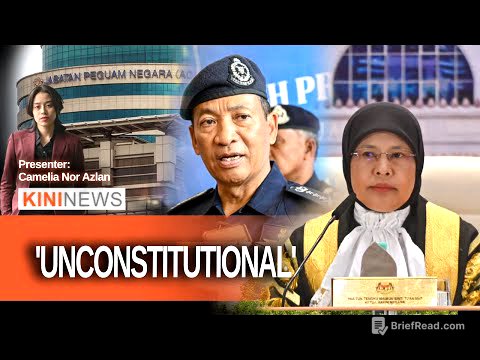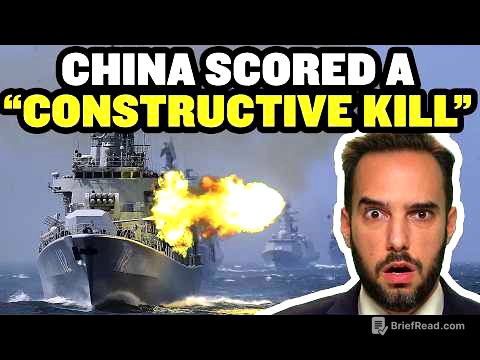TLDR;
This video explains the meaning, definition, and significance of capital structure, as well as the factors that affect it. It covers the composition of capital structure, including equity and debt, and discusses how to determine the optimal capital structure to maximize wealth and minimize costs. The video also touches on the importance of considering factors such as the nature and size of the business, cost of capital, control, market conditions, tax position, and legal requirements when designing a capital structure.
- Capital structure refers to the proportion of debt and equity used to finance a company's assets.
- The goal of capital structure planning is to minimize the cost of capital and maximize the value of the firm.
- Factors such as the nature of the business, market conditions, and tax position can influence capital structure decisions.
Introduction to Capital Structure [0:00]
The video introduces the concept of capital structure, comparing it to the construction of a building. Just as a building requires bricks, cement, and other materials, a business requires capital. The discussion focuses on permanent capital, which provides a foundation for the business, rather than working capital used for day-to-day operations. The capital structure refers to how this permanent capital is raised and the mix of different sources of funds that appear on the liability side of the balance sheet.
Definition of Capital Structure [0:12]
Capital structure refers to the proportion of various long-term sources of funds used to finance the total capital of an enterprise. These long-term sources include equity, preference shares, and debt. The key is to find the right mix of these sources to create an optimal capital structure. Long-term sources are emphasized because the repayment period is extended over many years, aligning with the long-term nature of the business.
Definitions by Experts [3:34]
According to experts like Robert Wessel, capital structure involves determining the appropriate proportions of long-term funds within an enterprise. The goal is to mix these components effectively to achieve an optimal capital structure.
Major Sources of Long-Term Funds [4:10]
The major sources of long-term funds are proprietor's funds (equity) and borrowed funds (debt). Proprietor's funds include equity share capital, preference share capital, and retained earnings. Borrowed funds include long-term loans and debentures. The capital structure is created by combining these sources in the right proportions.
Example of Capital Structure [5:11]
An example is provided using a hypothetical company, ABC Ltd., which needs to raise 100 crore in capital. The financial manager decides to raise 20% through long-term debt, 10% through preference shares, and 70% through equity shares. This mix creates the capital structure for the company.
Significance of Capital Structure [6:46]
Capital structure is significant because it helps in strategic decision-making, determines the level of risk a firm is willing to take, prevents over or under-capitalization, determines the cost of capital, facilitates wealth maximization, and affects the firm's flexibility and control.
Risk Assessment and Return [7:37]
The capital structure helps determine the level of risk a firm is willing to take. Higher risk-taking can lead to higher returns, but it requires a capital structure that supports such risk.
Over and Under-Capitalization [8:27]
A well-defined capital structure prevents over-capitalization (having too much capital) and under-capitalization (having too little capital), ensuring an optimal balance.
Cost of Capital and Wealth Maximization [9:25]
Capital structure helps determine the cost of capital, which is the cost of obtaining funds. The goal is to minimize this cost while maximizing the wealth of shareholders. This involves selecting funding sources that offer the lowest cost.
Flexibility and Liquidity [11:17]
The right capital structure provides flexibility and liquidity, allowing the company to increase or decrease capital as needed. This is achieved by including a mix of funding sources that can be easily adjusted.
Control and Ownership [12:22]
Capital structure affects the control and ownership of the firm. A higher proportion of equity shares means more ownership is distributed among shareholders. The capital structure should be designed to maintain the desired level of control among the owners.
Factors Affecting Capital Structure [13:26]
Several factors affect capital structure decisions, including the nature and size of the business, cost of capital, control, market conditions, tax position, legal requirements, and flexibility.
Nature and Size of Business [14:10]
The nature and size of the business influence the capital structure. Small companies often rely more on equity capital, while larger companies can handle more debt. Public companies may prefer debt due to its tax advantages.
Cost of Capital Considerations [16:09]
The cost of capital is a critical factor. It refers to the minimum return a company must earn to satisfy its investors. The capital structure should be designed to minimize the cost of capital while meeting investor expectations.
Control and Management Preferences [19:28]
Management typically wants to maintain control of the company. Issuing new equity shares can dilute control, so the capital structure should be designed to avoid excessive dilution.
Capital Market Conditions [20:27]
Capital market conditions, such as booms and recessions, affect capital structure decisions. During a recession, issuing new equity shares may not be favorable due to lower valuations.
Tax Position and Benefits [21:26]
The company's tax position influences the capital structure. Debt financing provides tax benefits because interest payments are tax-deductible. If the goal is to minimize taxes, the capital structure should include a higher proportion of debt.
Legal Requirements and Flexibility [22:50]
Legal requirements and guidelines from regulatory bodies like SEBI must be followed when designing the capital structure. The structure should also be flexible, allowing the company to increase or decrease capital as needed.









